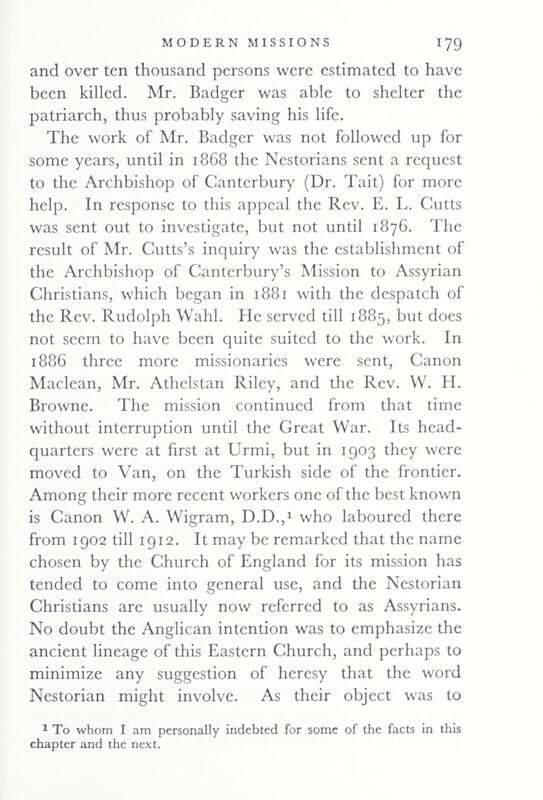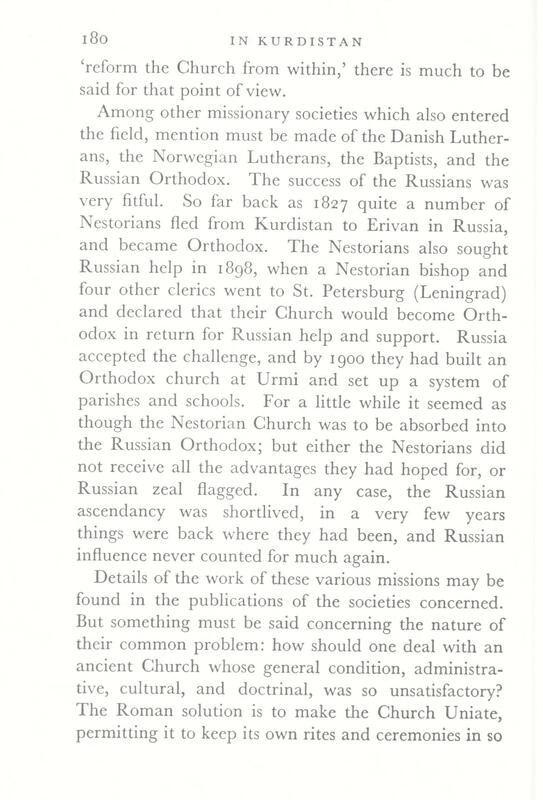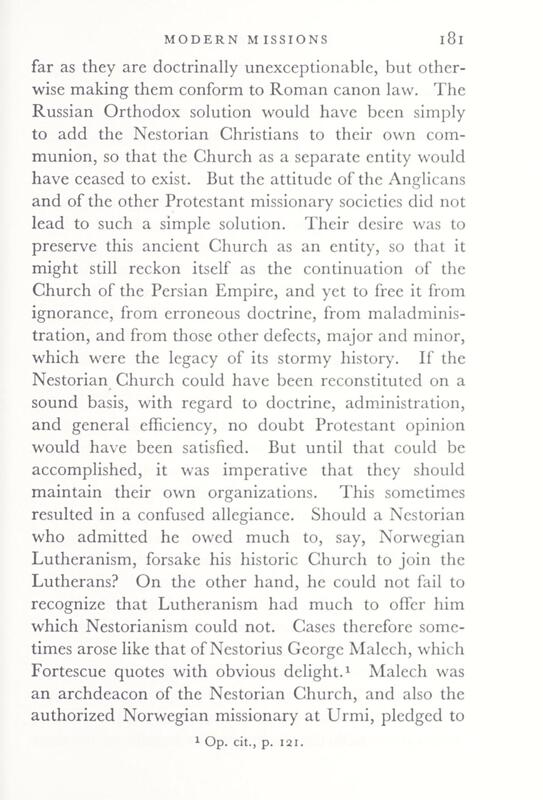-
Title
-
The Nestorian Churches: A Concise History of Nestorian Christianity in Asia From the Persian Schism to the Modern Assyrians
-
Creator
-
Audrey R. Vine
-
Date
-
1937
-
Description
-
Vine traces the Anglican engagement with the Nestorian Church from the late 19th century: after an appeal in 1868, Archbishop Tait sent E. L. Cutts to investigate (arriving 1876), which led to the Archbishop of Canterbury’s Mission to Assyrian Christians beginning in 1881. Early staff included Rudolph Wahl (to 1885), followed in 1886 by Canon A. J. Maclean, Athelstan Riley, and W. H. Browne; later, Canon W. A. Wigram worked there from 1902 to 1912. Headquarters were first at Urmia and moved in 1903 to Van. Vine remarks that the name chosen by the Church of England for its mission “has tended to come into general use,” so that Nestorian Christians were now usually called “Assyrians.” She adds that the Nestorians themselves styled their community “Christians” or “Syrians.” Vine situates the Anglican choice alongside other missionary efforts, Danish and Norwegian Lutherans, Baptists, and the Russian Orthodox. The Russian approach briefly drew Nestorian leaders toward union (notably an 1898 delegation to St. Petersburg); by 1900 Russia had built an Orthodox church at Urmia and opened schools, but its influence soon waned. In contrast, Rome’s solution was to make the Church Uniate (retaining rites while conforming to canon law), while Protestants sought to preserve the church as a distinct body, “the continuation of the Church of the Persian Empire”—yet to reform it from within, correcting doctrine and administration. That stance, Vine notes, sometimes created confused allegiances for Nestorians who benefited from Protestant schooling but hesitated to leave their historic church (she cites the case of Nestorius George Malech).
Later in the chapter, Vine carries the naming point forward into the First World War and its aftermath: in British discussions about Mesopotamia and Nestorian resettlement, she observes that the community was “now generally called Assyrians.” A footnote explains why the label had traction in English public culture, by the 1920s and 1930s, references in The Times, Hansard, Keesing’s Contemporary Archives, Headway, and Great Britain and the East were filed under “Assyrian” rather than “Nestorian,” and the patriarch raised no objection to either name. Vine’s narrative thus shows both the missionary origin of the term’s spread (via the Church of England) and the administrative-media routinization that made “Assyrian” the default Anglophone heading, even as local self-designations remained “Christians” or “Syrians.”
-
Language
-
English
-
Publisher
-
The Nestorian Churches: A Concise History of Nestorian Christianity in Asia from the Persian Schism to the Modern Assyrians, Audrey R. Vine, 1937, pp. 179-181.
-
archive.org
-
Subject
-
Assyrian invented Identity






